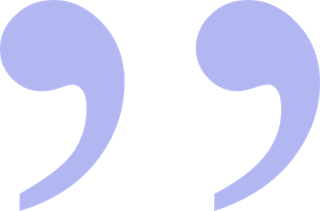Pearl Zhu's Blog, page 1276
November 18, 2016
The Weekly Insight of the “Future of CIO” 11/18/ 2016
 The “Future of CIO” Blog has reached 1.5 million page views with 3300+ blog posting in 59+ different categories of leadership, management, strategy, digitalization, change/talent, etc. The content richness is not for its own sake, but to convey the vision and share the wisdom. Here is the weekly insight about digital leadership, IT Management, and Talent Management.
The “Future of CIO” Blog has reached 1.5 million page views with 3300+ blog posting in 59+ different categories of leadership, management, strategy, digitalization, change/talent, etc. The content richness is not for its own sake, but to convey the vision and share the wisdom. Here is the weekly insight about digital leadership, IT Management, and Talent Management.The Weekly Insight of the “Future of CIO” 11/18/2016TO Celebrate 3300th Blog Posting: Flipping Innovation Storybook to the Next Level with Digital Imperative Innovation is a dynamic storybook that has intricate chapters, with serendipitous cover, it is the time to celebrate the #3300 blog posting of the “Future of CIO” blog, to envision, imagine, inspire, brainstorm, co-write the dynamic digital innovation storybook that never ends. It is the time to flip it over to the new page - expanding digital innovation ecosystem with an imperative.
The New Book “IT Innovation - Reinvent IT for the Digital Age” Chapter 8 Run a Highly Innovative Digital Ready IT Organization, Slideshare Presentation: In today’s digital dynamic and technical environment where IT is being used more and more around the globe for revenue generating initiatives and the business is becoming IT. IT is moving up its maturity from functioning, to firm to delight, running full speed with less friction, unleash its full potential via optimization, and improve its maturity via intelligence and innovation. IT can weave all necessary business elements, either hard or soft, to orchestrate a digital symphony.
How to Overcome Decision Fatigues: One significant effect of digitization is increased velocity, complexity, unpredictability, and ambiguity. Therefore, there is a need for a faster response to changes in business and industry based on effective and efficient decision making. In fact, decision-making is one of the most important activities for today’s digital leaders and professionals. Often people rush up to make so-so decisions or are too procrastinated to make timely decisions. Statistically, the high ratio of strategic decisions has been made poorly and cause the catastrophic effect. What are the root causes of those decision failures, and how to survive from decision fatigue and improve overall business decision effectiveness?
The CIO's Digital Agenda: Five Big “Why”s in IT Digital Transformation Nov. 2016 Due to the changing nature of technology, IT leadership role also continues to evolve and shift the focus, to move up the maturity level. More and more CIOs are requested to take more responsibility and many CIOs present the breadth of leadership competency. The proactive IT debates help IT leaders to brainstorm innovative and better ways to do things, and improve management capabilities. Here are the monthly CIO debates collections for Nov 2016.
A Paradoxical Board: Corporate Boards are there to oversee business strategy and hold the senior executive team accountable for execution, to ensure reasonable governance. The board also sets leadership tone for advocating innovation and driving changes. The businesses environment today is full of uncertainty and ambiguity, a paradoxical board is leveraging BALANCE as a management philosophy in leading digital transformation seamlessly.?
 How to Deal With Change Management Conundrum Change is inevitable, and the speed of changes is increasing. Forward-looking organizations are also on the journey of digital transformation. Change can be a somewhat mechanical implementation of new or different ways to doing something while the transformation is more likely to be a sweeping approach to altering a culture, or parts of it, possibly even to parts of its ecosystem, to embrace such as change and help it become self-perpetuating. Blogging is not about writing, but about thinking and innovating the new ideas; it’s not just about WHAT to say, but about WHY to say, and HOW to say it. It reflects the color and shade of your thought patterns, and it indicates the peaks and curves of your thinking waves. Unlike pure entertainment, quality and professional content takes time for digesting, contemplation and engaging, and therefore, it takes the time to attract the "hungry minds" and the "deep souls." It’s the journey to amplify diverse voices and deepen digital footprints, and it's the way to harness your innovative spirit.
How to Deal With Change Management Conundrum Change is inevitable, and the speed of changes is increasing. Forward-looking organizations are also on the journey of digital transformation. Change can be a somewhat mechanical implementation of new or different ways to doing something while the transformation is more likely to be a sweeping approach to altering a culture, or parts of it, possibly even to parts of its ecosystem, to embrace such as change and help it become self-perpetuating. Blogging is not about writing, but about thinking and innovating the new ideas; it’s not just about WHAT to say, but about WHY to say, and HOW to say it. It reflects the color and shade of your thought patterns, and it indicates the peaks and curves of your thinking waves. Unlike pure entertainment, quality and professional content takes time for digesting, contemplation and engaging, and therefore, it takes the time to attract the "hungry minds" and the "deep souls." It’s the journey to amplify diverse voices and deepen digital footprints, and it's the way to harness your innovative spirit.Follow us at: @Pearl_Zhu
Published on November 18, 2016 00:11
TO Celebrate 3300th Blog Posting: Flipping Innovation Storybook to the Next Level with Digital Imperative
Being innovative is a state of mind, which is more important than doing any type of innovation.
 Innovation is a dynamic storybook that has intricate chapters, with serendipitous cover, it is the time to celebrate the #3300 blog posting of the “Future of CIO” blog, to envision, imagine, inspire, brainstorm, co-write the dynamic digital innovation storybook that never ends. It is the time to flip it over to the new page - expanding digital innovation ecosystem with the imperative.
Innovation is a dynamic storybook that has intricate chapters, with serendipitous cover, it is the time to celebrate the #3300 blog posting of the “Future of CIO” blog, to envision, imagine, inspire, brainstorm, co-write the dynamic digital innovation storybook that never ends. It is the time to flip it over to the new page - expanding digital innovation ecosystem with the imperative.
Creativity is #1 wanted skill in the digital era, and innovation is the key business differentiator: At present days, we cannot separate knowledge and creativity if we want to stay competitive in the business or accelerate digital journey either at the individual or organizational level . Creativity has just become indispensable. ‘Creativity’ is a precursor to knowledge in many ways, because commodity knowledge is only a click away, and creativity is the high level thinking. Innovation has risen as the key differentiating value for a company to gain business competency. Through creativity (imagining, associating, experimenting, testing the hypothesis, failing, entreating, improving), new knowledge is developed. If creativity is an innate process to create novel ideas, innovation is utilizing what you already have in a unique and creative way that has not been done before and using that thing to achieve its commercial value. Innovation can be iterative, evolutionary, revolutionary, or disruptive, but it must be marketable and implementable. It is not just new design or invention, it is taking that invention, tuning it, tweaking it, changing it in a way that the inventor didn't see and making the customers say "wow, that's cool." At the individual level, being innovative is about having a growth mindset, keeping fresh eyes, exploring new opportunities, challenging the status quo, and discovering the better way to do things.
Being innovative is a state of mind, which is more important than doing any type of innovation: Innovation should start from a deep research of people’s concerns, needs, and frustrations. Being able to engage in the successful creation of innovations is a very hard work and does include a lot of thinking, observation, inquiries, unusual connections, experimenting, skills and abilities as well as processes and theories. Innovation comes with the increased knowledge and understanding of facts. Knowledge and practices are relevant to innovation; doing more results in more opportunity for innovation. Flexing creativity mental muscles, and gaining a comprehensive understanding of the "innovation" is critical, people who engage in those activities should understand what they do and those who talk about it should understand what they talking about. You never know how innovative you might be in some field before encountering the problems and before the adoption of solutions. Innovators are often the individuals that are so passionate about what they are doing, that they live it on their own time, and they can focus better on what they are doing by diminishing distraction. If that kind of employee is working for you; not only do you have assurance, you are getting value for the compensation you are spending, you cannot help but get better results.
 Collective Creativity: Being creative is the kind to "think outside the box" for ideas and solutions. But the creative spark does not always originate solely in the individual. In that manner, you could say there is more collective creativity happening everywhere. Digital is the age of innovation and collaboration. More often than not, innovation is a teamwork, and collective creativity helps overcome many common challenges facing in the human society. Innovation leaders should understand that collective creativity can manifest in a collective environment, inspire your employees to pursue three “P”s - passion, purpose and potential; and three “C”s - communication, context, and collaboration. Recognize that many small innovations will collectively outweigh one or few large innovations. There will be ups and downs along the way and you need the resilience to make the trip to completion.
Collective Creativity: Being creative is the kind to "think outside the box" for ideas and solutions. But the creative spark does not always originate solely in the individual. In that manner, you could say there is more collective creativity happening everywhere. Digital is the age of innovation and collaboration. More often than not, innovation is a teamwork, and collective creativity helps overcome many common challenges facing in the human society. Innovation leaders should understand that collective creativity can manifest in a collective environment, inspire your employees to pursue three “P”s - passion, purpose and potential; and three “C”s - communication, context, and collaboration. Recognize that many small innovations will collectively outweigh one or few large innovations. There will be ups and downs along the way and you need the resilience to make the trip to completion.
Creativity is not always accidental - don’t wait for that spectacular “Eureka Moment,” but proactively practicing to reach it; innovation is not serendipitous, but often in the dark, take a structural approach to unmystified it. Both individuals and organizations just have to practice, practice, and practice more, ride above the learning curve, continue to pursue the special “Aha moment” for creativity and spin the magic circle of innovation.
Follow us at: @Pearl_Zhu
 Innovation is a dynamic storybook that has intricate chapters, with serendipitous cover, it is the time to celebrate the #3300 blog posting of the “Future of CIO” blog, to envision, imagine, inspire, brainstorm, co-write the dynamic digital innovation storybook that never ends. It is the time to flip it over to the new page - expanding digital innovation ecosystem with the imperative.
Innovation is a dynamic storybook that has intricate chapters, with serendipitous cover, it is the time to celebrate the #3300 blog posting of the “Future of CIO” blog, to envision, imagine, inspire, brainstorm, co-write the dynamic digital innovation storybook that never ends. It is the time to flip it over to the new page - expanding digital innovation ecosystem with the imperative. Creativity is #1 wanted skill in the digital era, and innovation is the key business differentiator: At present days, we cannot separate knowledge and creativity if we want to stay competitive in the business or accelerate digital journey either at the individual or organizational level . Creativity has just become indispensable. ‘Creativity’ is a precursor to knowledge in many ways, because commodity knowledge is only a click away, and creativity is the high level thinking. Innovation has risen as the key differentiating value for a company to gain business competency. Through creativity (imagining, associating, experimenting, testing the hypothesis, failing, entreating, improving), new knowledge is developed. If creativity is an innate process to create novel ideas, innovation is utilizing what you already have in a unique and creative way that has not been done before and using that thing to achieve its commercial value. Innovation can be iterative, evolutionary, revolutionary, or disruptive, but it must be marketable and implementable. It is not just new design or invention, it is taking that invention, tuning it, tweaking it, changing it in a way that the inventor didn't see and making the customers say "wow, that's cool." At the individual level, being innovative is about having a growth mindset, keeping fresh eyes, exploring new opportunities, challenging the status quo, and discovering the better way to do things.
Being innovative is a state of mind, which is more important than doing any type of innovation: Innovation should start from a deep research of people’s concerns, needs, and frustrations. Being able to engage in the successful creation of innovations is a very hard work and does include a lot of thinking, observation, inquiries, unusual connections, experimenting, skills and abilities as well as processes and theories. Innovation comes with the increased knowledge and understanding of facts. Knowledge and practices are relevant to innovation; doing more results in more opportunity for innovation. Flexing creativity mental muscles, and gaining a comprehensive understanding of the "innovation" is critical, people who engage in those activities should understand what they do and those who talk about it should understand what they talking about. You never know how innovative you might be in some field before encountering the problems and before the adoption of solutions. Innovators are often the individuals that are so passionate about what they are doing, that they live it on their own time, and they can focus better on what they are doing by diminishing distraction. If that kind of employee is working for you; not only do you have assurance, you are getting value for the compensation you are spending, you cannot help but get better results.
 Collective Creativity: Being creative is the kind to "think outside the box" for ideas and solutions. But the creative spark does not always originate solely in the individual. In that manner, you could say there is more collective creativity happening everywhere. Digital is the age of innovation and collaboration. More often than not, innovation is a teamwork, and collective creativity helps overcome many common challenges facing in the human society. Innovation leaders should understand that collective creativity can manifest in a collective environment, inspire your employees to pursue three “P”s - passion, purpose and potential; and three “C”s - communication, context, and collaboration. Recognize that many small innovations will collectively outweigh one or few large innovations. There will be ups and downs along the way and you need the resilience to make the trip to completion.
Collective Creativity: Being creative is the kind to "think outside the box" for ideas and solutions. But the creative spark does not always originate solely in the individual. In that manner, you could say there is more collective creativity happening everywhere. Digital is the age of innovation and collaboration. More often than not, innovation is a teamwork, and collective creativity helps overcome many common challenges facing in the human society. Innovation leaders should understand that collective creativity can manifest in a collective environment, inspire your employees to pursue three “P”s - passion, purpose and potential; and three “C”s - communication, context, and collaboration. Recognize that many small innovations will collectively outweigh one or few large innovations. There will be ups and downs along the way and you need the resilience to make the trip to completion. Creativity is not always accidental - don’t wait for that spectacular “Eureka Moment,” but proactively practicing to reach it; innovation is not serendipitous, but often in the dark, take a structural approach to unmystified it. Both individuals and organizations just have to practice, practice, and practice more, ride above the learning curve, continue to pursue the special “Aha moment” for creativity and spin the magic circle of innovation.
Follow us at: @Pearl_Zhu
Published on November 18, 2016 00:06
TO Celebrate 3300th BLog Posting: Flipping Innovation Storybook to the Next Level with Digital Imperative
 Innovation is a dynamic storybook that has intricate chapters, with serendipitous cover, it is the time to celebrate the #3300 blog posting of the “Future of CIO” blog, to envision, imagine, inspire, brainstorm, co-write the dynamic digital innovation storybook that never ends. It is the time to flip it over to the new page - expanding digital innovation ecosystem with the imperative.
Innovation is a dynamic storybook that has intricate chapters, with serendipitous cover, it is the time to celebrate the #3300 blog posting of the “Future of CIO” blog, to envision, imagine, inspire, brainstorm, co-write the dynamic digital innovation storybook that never ends. It is the time to flip it over to the new page - expanding digital innovation ecosystem with the imperative. Creativity is #1 wanted skill in the digital era, and innovation is the key business differentiator: At present days, we cannot separate knowledge and creativity if we want to stay competitive in the business or accelerate digital journey either at the individual or organizational level . Creativity has just become indispensable. ‘Creativity’ is a precursor to knowledge in many ways. Innovation has risen as the key differentiating value for a company to gain business competency. Through creativity (imagining, associating, experimenting, testing the hypothesis, failing, entreating, improving), new knowledge is developed. If creativity is an innate process to create novel ideas, innovation is utilizing what you already have in a unique and creative way that has not been done before and using that thing to achieve its commercial value. Innovation can be iterative, evolutionary, revolutionary, or disruptive, but it must be marketable and implementable. It is not just new design or invention, it is taking that invention tuning it, tweaking it, changing it in a way that the inventor didn't see and making the customers say "wow, that's cool." At the individual level, it’s about having a growth mindset, keeping fresh eyes, exploring the new opportunity, challenging the staus quo, and discovering the better way to do things.
Being innovative is a state of mind, which is more important than doing any type of innovation: Creativity is the high level of thinking. Innovation should start from a deep research of people’s concerns, needs, and frustrations. Being able to engage in the successful creation of innovations is a very hard work and does include a lot of thinking, observation, inquiries, unusual connections, experimenting, skills and abilities as well as processes and theories, Innovation comes with the increased knowledge and understanding of facts. Knowledge and practices are relevant to innovation; doing more results in more opportunity for innovation. Flexing creativity mental muscles, and gaining a comprehensive understanding of the "innovation" is critical, people who engage in those activities should understand what they do and those who talk about it should understand what they talking about. You never know how innovative you might be in some field before encountering the problems and before the adoption of solutions. Innovators are often the individuals that are so passionate about what they are doing, that they live it on their own time, and they can focus better on what they are doing by diminishing distraction. If that kind of employee is working for you; not only do you have assurance, you are getting value for the compensation you are spending, you cannot help but get better results.
 Collective Creativity: Digital is the age of innovation and collaboration. More often than not, innovation is a teamwork, and collective creativity helps overcome many common challenges facing in the human society. Being creative is the kind to "think outside the box" for ideas and solutions. But the creative spark does not always originate solely in the individual. In that manner, you could say there is more collective creativity happening everywhere. As creative leaders,Collective Creativity can manifest in a collective environment, inspire your employees to pursue three “P”s - passion, purpose and potential; and three “C”s - communication, context, and collaboration. Recognize that many small innovations will collectively outweigh one or few large innovations. There will be ups and downs along the way and you need the resilience to make the trip to completion.
Collective Creativity: Digital is the age of innovation and collaboration. More often than not, innovation is a teamwork, and collective creativity helps overcome many common challenges facing in the human society. Being creative is the kind to "think outside the box" for ideas and solutions. But the creative spark does not always originate solely in the individual. In that manner, you could say there is more collective creativity happening everywhere. As creative leaders,Collective Creativity can manifest in a collective environment, inspire your employees to pursue three “P”s - passion, purpose and potential; and three “C”s - communication, context, and collaboration. Recognize that many small innovations will collectively outweigh one or few large innovations. There will be ups and downs along the way and you need the resilience to make the trip to completion. Creativity is not always accidental - don’t wait for that spectacular “Eureka Moment,” but actively practicing to reach it; innovation is not serendipitous, but often in the dark, take the structural approach to unpuzzling it. Both individuals and organization just have to practice, practice, and practice more, ride above the learning curve, continue to pursue the special “Aha moment” for creativity and spin the magic circle of innovation.
Follow us at: @Pearl_Zhu
Published on November 18, 2016 00:06
The Popular Quotes Collection I in “Digital Master” Book Series
 “Digital Master” is the series of guidebooks (11+ books) to perceive the multifaceted impact digital is making to the business and our society, help forward-thinking organizations navigate through the digital journey in a systematic way, and avoid “rogue digital.” Here is the set of popular quotes for conveying the digital vision and sharing the unique insight about the digital transformation.
“Digital Master” is the series of guidebooks (11+ books) to perceive the multifaceted impact digital is making to the business and our society, help forward-thinking organizations navigate through the digital journey in a systematic way, and avoid “rogue digital.” Here is the set of popular quotes for conveying the digital vision and sharing the unique insight about the digital transformation. Digital Master by Pearl Zhu
Digital Master by Pearl ZhuDigital Master Quotes “Digital means flow: data flow, information flow, knowledge flow, and mind flow.” ― Pearl Zhu, Digital Master
“Innovation is the art at the eyes of artist; the science at the mind of scientist; and the bridge between the art and science.” ― Pearl Zhu, Digital Master
“It is the time to tremendous awakening toward “inquisitiveness” with cross-cultural sharing through technology and inner insights.” ― Pearl Zhu, Digital Master
“Digital strategy is like a GPS to navigate through your digitalization journey.” ― Pearl Zhu, Digital Master
 Thinkingaire: 100 Game Changing Digital Mindsets to Compete for the Future
Thinkingaire: 100 Game Changing Digital Mindsets to Compete for the Future “A positive mind reflects many of the Sun’s characteristics: brightness, nourishment, and vibrance.” ― Pearl Zhu, Thinkingaire: 100 Game Changing Digital Mindsets to Compete for the Future
“A programmable mind embraces mental agility, to practice “de-learning” and “relearning” all the time.” ― Pearl Zhu, Thinkingaire: 100 Game Changing Digital Mindsets to Compete for the Future
“Learning to think beyond a single dimension, look beyond the surface, love more than one color and enjoy the world of differences.” ― Pearl Zhu, Thinkingaire: 100 Game Changing Digital Mindsets to Compete for the Future
“It takes a decade to grow a tree, and it takes more than one generation to shape the right mindset.” ― Pearl Zhu, Thinkingaire: 100 Game Changing Digital Mindsets to Compete for the Future
“Self-discipline is nothing but self-consciousness.” ― Pearl Zhu, Thinkingaire: 100 Game Changing Digital Mindsets to Compete for the Future
 CIO Master: Unleash the Digital Potential of It b
CIO Master: Unleash the Digital Potential of It b“IT needs to transform from a big fat silo to the digital fit brain of a modern organization.” ― Pearl Zhu, CIO Master: Unleash the Digital Potential of It
“A strategy is a combination of an origin, a destination, and a route to get from origin to destination.” ― Pearl Zhu, CIO Master: Unleash the Digital Potential of It
“The pervasive digitalization or IT consumerism requires the balance of the “old experience” and the “new way to do things,” the “learning and doing.” ― Pearl Zhu, CIO Master: Unleash the Digital Potential of It
“IT delivery is about People, Process, and Technology.” ― Pearl Zhu, CIO Master: Unleash the Digital Potential of It
“The future of digital organizations is to be complex enough to act intelligently and nimble enough to adapt to the change promptly.” ― Pearl Zhu, CIO Master: Unleash the Digital Potential of It
 Leadership Master: Five Digital Trends to Leap Leadership Maturity by “The defining qualities that will distinguish great leaders from the rest are stemmed from the mindset level.” ― Pearl Zhu, Leadership Master: Five Digital Trends to Leap Leadership Maturity
Leadership Master: Five Digital Trends to Leap Leadership Maturity by “The defining qualities that will distinguish great leaders from the rest are stemmed from the mindset level.” ― Pearl Zhu, Leadership Master: Five Digital Trends to Leap Leadership Maturity“A wise leader doesn’t just follow but discover the path.” ― Pearl Zhu, Leadership Master: Five Digital Trends to Leap Leadership Maturity
“A vision should be attainable subject to current times and its ability to adapt to changing times.” ― Pearl Zhu, Leadership Master: Five Digital Trends to Leap Leadership Maturity
“The art of questioning is to ignite innovative thinking; the science of questioning is to frame system thinking, with the progressive pursuit of better solutions.” ― Pearl Zhu, Leadership Master: Five Digital Trends to Leap Leadership Maturity
“The answer from yesterday is not as critical as the questions about the future.” ― Pearl Zhu, Leadership Master: Five Digital Trends to Leap Leadership Maturity
Digitizing Boardroom: The Multifaceted Aspects of Digital Ready Boards by Pearl Zhu
“An IT friendly Board should change the perspective to understand the power of information and the potential of technology.” ― Pearl Zhu, Digitizing Boardroom: The Multifaceted Aspects of Digital Ready Boards
“The value-added Board brings the high-performance result, “deep common sense,” balance, improved strategic thinking, creativity, wisdom and more.” ― Pearl Zhu, Digitizing Boardroom: The Multifaceted Aspects of Digital Ready Boards
“The BoDs play the significant role in both Management Innovation and Innovation Management.” ― Pearl Zhu, Digitizing Boardroom: The Multifaceted Aspects of Digital Ready Boards
“An IT friendly Board should change the perspective to understand the power of information and the potential of technology.” ― Pearl Zhu, Digitizing Boardroom: The Multifaceted Aspects of Digital Ready Boards
“Governance is not about maximization, but about optimization.”
― Pearl Zhu, Digitizing Boardroom: The Multifaceted Aspects of Digital Ready BoardsFollow us at: @Pearl_Zhu
Published on November 18, 2016 00:02
November 17, 2016
"CIO Master" Book Tuning: Three IT Practices to Achieve Digital Excellence
Any successful transformation starts and ends with a clear vision of what the transformed organization should be.
 Digital transformation is a leapfrogging change. The most difficult topic during transformation is managing uncertainty especially when you change many things: people, technology, processes, culture, systems and organization at the whole in the same time. It is a complicated moment for all people in the organization at all levels. More often than now, IT is at the unique position to oversee underlying business processes and weave all important elements of the company into business competency. IT also needs to make continuous improvement and delivery to achieve digital excellence.
Digital transformation is a leapfrogging change. The most difficult topic during transformation is managing uncertainty especially when you change many things: people, technology, processes, culture, systems and organization at the whole in the same time. It is a complicated moment for all people in the organization at all levels. More often than now, IT is at the unique position to oversee underlying business processes and weave all important elements of the company into business competency. IT also needs to make continuous improvement and delivery to achieve digital excellence.
Making continuous improvement more than discovering an elegant solution: Running IT not as an isolated support function, but as a business inside the business, is the digital way to go. It is a multi-stepped process that includes both problem resolution and solution implementation. All stages must be handled with attention and proficiency to ensure success. The goal of change and improvement should look beyond immediate problem resolution. Getting ahead of change curve and improve business agility. With emerging digital opportunities and risks, business leaders including IT leaders are seeing the benefit of the IT strategy being fully part of the enterprise strategy. The more complex the change and digital transformation, the more complex the solution. This often means customized approaches that may apply differently to each individual impacted, and it involves people. Process, and technology. The focus should include actions designed to sustain performance improvement and anchor change as a new opportunity. It's getting into action in creative, positive, productive ways that educate, support and celebrate every emotional step of the change curve and collective transformation journey.
Running IT as a revenue generator, not just a cost cutter: Many IT organizations still get stuck at the lower level of maturity, focus on bottom line activities, being perceived as a cost center. There is a huge gap between IT and business, the chasm between IT and customers. To achieve digital excellence, IT should strive to be a revenue generator and value creator. It is the time for business and IT to take each other more seriously, and ideally, integrate as a whole, with the ambidextrous talent to achieve common goals and deliver the high-performance business result. So, when IT reduces the cost of doing business, it increases the margin. IT strives to be a revenue contributor to the business. To manage a comprehensive IT portfolio, make sure you have the right skills mix and collective capacity. And, to bridge the gap between business and IT, it’s more about psychological knowledge rather than technology or business knowledge. What is needed are lots more impartial and independent hybrids who can help businesses define a robust and rigorous set of needs, work with technologists to deliver the solution and with both parties to ensure the desired outcome happens.
 Exploring the digital dimension of organizational structure: The lightweight and powerful digital technologies provide organizations great opportunities to optimize structures and improve efficiency, effectiveness, and agility. When the enterprise is at risk of being defeated by smaller, nimbler, more agile competitors, then the silos’ owners understand it is in their own benefit to collaborate and build “horizontal” organizational inter dependencies to achieve better time to market for global products and services. The good organizational structure tuning should dig through the real issues need to be addressed, or the real causes of changes, and prepare the change following step-wise steps, walk through “look, listen, question, understand, plan, test and collaboration,” scenario, and take advantage of the latest technology trends that provide more effective way in cross-functional communication and cross-project collaboration. The digital dimension of organizational structure is enjoying a powerful tailwind, organizational structure tuning should be seen as a digital transformation initiative, not for its own sake, but justify a solid business case, subjected to reality-based cost-benefit analysis. It is also important to well align people, process and technology, to make change happen not only on the structural surface, but really ensure the culture is harmonized and the right people are in the right position to take the right tasks, and organization as a whole is superior the sum of pieces.
Exploring the digital dimension of organizational structure: The lightweight and powerful digital technologies provide organizations great opportunities to optimize structures and improve efficiency, effectiveness, and agility. When the enterprise is at risk of being defeated by smaller, nimbler, more agile competitors, then the silos’ owners understand it is in their own benefit to collaborate and build “horizontal” organizational inter dependencies to achieve better time to market for global products and services. The good organizational structure tuning should dig through the real issues need to be addressed, or the real causes of changes, and prepare the change following step-wise steps, walk through “look, listen, question, understand, plan, test and collaboration,” scenario, and take advantage of the latest technology trends that provide more effective way in cross-functional communication and cross-project collaboration. The digital dimension of organizational structure is enjoying a powerful tailwind, organizational structure tuning should be seen as a digital transformation initiative, not for its own sake, but justify a solid business case, subjected to reality-based cost-benefit analysis. It is also important to well align people, process and technology, to make change happen not only on the structural surface, but really ensure the culture is harmonized and the right people are in the right position to take the right tasks, and organization as a whole is superior the sum of pieces.
Any successful transformation starts and ends with a clear vision of what the transformed organization should be. The role of digital visionary CIO is to identify and blend the ways that information and technology can assist and shape the business by linking all digital aspects together to enforce the value creation. These elements are then mixed with other business ingredients to create products and services which generate differentiated value for their business’s long-term growth, and the term of value can be measurable in a multidimensional way from business, customers and shareholders’ perspective, running IT as the business to achieve digital excellence.
Follow us at: @Pearl_Zhu
 Digital transformation is a leapfrogging change. The most difficult topic during transformation is managing uncertainty especially when you change many things: people, technology, processes, culture, systems and organization at the whole in the same time. It is a complicated moment for all people in the organization at all levels. More often than now, IT is at the unique position to oversee underlying business processes and weave all important elements of the company into business competency. IT also needs to make continuous improvement and delivery to achieve digital excellence.
Digital transformation is a leapfrogging change. The most difficult topic during transformation is managing uncertainty especially when you change many things: people, technology, processes, culture, systems and organization at the whole in the same time. It is a complicated moment for all people in the organization at all levels. More often than now, IT is at the unique position to oversee underlying business processes and weave all important elements of the company into business competency. IT also needs to make continuous improvement and delivery to achieve digital excellence. Making continuous improvement more than discovering an elegant solution: Running IT not as an isolated support function, but as a business inside the business, is the digital way to go. It is a multi-stepped process that includes both problem resolution and solution implementation. All stages must be handled with attention and proficiency to ensure success. The goal of change and improvement should look beyond immediate problem resolution. Getting ahead of change curve and improve business agility. With emerging digital opportunities and risks, business leaders including IT leaders are seeing the benefit of the IT strategy being fully part of the enterprise strategy. The more complex the change and digital transformation, the more complex the solution. This often means customized approaches that may apply differently to each individual impacted, and it involves people. Process, and technology. The focus should include actions designed to sustain performance improvement and anchor change as a new opportunity. It's getting into action in creative, positive, productive ways that educate, support and celebrate every emotional step of the change curve and collective transformation journey.
Running IT as a revenue generator, not just a cost cutter: Many IT organizations still get stuck at the lower level of maturity, focus on bottom line activities, being perceived as a cost center. There is a huge gap between IT and business, the chasm between IT and customers. To achieve digital excellence, IT should strive to be a revenue generator and value creator. It is the time for business and IT to take each other more seriously, and ideally, integrate as a whole, with the ambidextrous talent to achieve common goals and deliver the high-performance business result. So, when IT reduces the cost of doing business, it increases the margin. IT strives to be a revenue contributor to the business. To manage a comprehensive IT portfolio, make sure you have the right skills mix and collective capacity. And, to bridge the gap between business and IT, it’s more about psychological knowledge rather than technology or business knowledge. What is needed are lots more impartial and independent hybrids who can help businesses define a robust and rigorous set of needs, work with technologists to deliver the solution and with both parties to ensure the desired outcome happens.
 Exploring the digital dimension of organizational structure: The lightweight and powerful digital technologies provide organizations great opportunities to optimize structures and improve efficiency, effectiveness, and agility. When the enterprise is at risk of being defeated by smaller, nimbler, more agile competitors, then the silos’ owners understand it is in their own benefit to collaborate and build “horizontal” organizational inter dependencies to achieve better time to market for global products and services. The good organizational structure tuning should dig through the real issues need to be addressed, or the real causes of changes, and prepare the change following step-wise steps, walk through “look, listen, question, understand, plan, test and collaboration,” scenario, and take advantage of the latest technology trends that provide more effective way in cross-functional communication and cross-project collaboration. The digital dimension of organizational structure is enjoying a powerful tailwind, organizational structure tuning should be seen as a digital transformation initiative, not for its own sake, but justify a solid business case, subjected to reality-based cost-benefit analysis. It is also important to well align people, process and technology, to make change happen not only on the structural surface, but really ensure the culture is harmonized and the right people are in the right position to take the right tasks, and organization as a whole is superior the sum of pieces.
Exploring the digital dimension of organizational structure: The lightweight and powerful digital technologies provide organizations great opportunities to optimize structures and improve efficiency, effectiveness, and agility. When the enterprise is at risk of being defeated by smaller, nimbler, more agile competitors, then the silos’ owners understand it is in their own benefit to collaborate and build “horizontal” organizational inter dependencies to achieve better time to market for global products and services. The good organizational structure tuning should dig through the real issues need to be addressed, or the real causes of changes, and prepare the change following step-wise steps, walk through “look, listen, question, understand, plan, test and collaboration,” scenario, and take advantage of the latest technology trends that provide more effective way in cross-functional communication and cross-project collaboration. The digital dimension of organizational structure is enjoying a powerful tailwind, organizational structure tuning should be seen as a digital transformation initiative, not for its own sake, but justify a solid business case, subjected to reality-based cost-benefit analysis. It is also important to well align people, process and technology, to make change happen not only on the structural surface, but really ensure the culture is harmonized and the right people are in the right position to take the right tasks, and organization as a whole is superior the sum of pieces.Any successful transformation starts and ends with a clear vision of what the transformed organization should be. The role of digital visionary CIO is to identify and blend the ways that information and technology can assist and shape the business by linking all digital aspects together to enforce the value creation. These elements are then mixed with other business ingredients to create products and services which generate differentiated value for their business’s long-term growth, and the term of value can be measurable in a multidimensional way from business, customers and shareholders’ perspective, running IT as the business to achieve digital excellence.
Follow us at: @Pearl_Zhu
Published on November 17, 2016 23:58
Three IT Practices to Achieve Digital Excellence
 Digital transformation is a leapfrogging change. The most difficult topic during transformation is managing uncertainty especially when you change many things: people, technology, processes, culture, systems and organization at the whole in the same time. It is a complicated moment for all people in the organization at all levels. More often than now, IT is at the unique position to weave all important elements of the business into business competency. IT also needs to make continuous improvement and delivery to achieve IT excellence.
Digital transformation is a leapfrogging change. The most difficult topic during transformation is managing uncertainty especially when you change many things: people, technology, processes, culture, systems and organization at the whole in the same time. It is a complicated moment for all people in the organization at all levels. More often than now, IT is at the unique position to weave all important elements of the business into business competency. IT also needs to make continuous improvement and delivery to achieve IT excellence. Making continuous improvement more than discovering an elegant solution: Running IT not as an isolated support function, but as a business inside the business, that's the way to go. It is a multi-stepped process that includes both problem resolution and solution implementation. All stages must be handled with attention and proficiency to ensure success. The goal of change and improvement should look beyond immediate problem resolution. Getting ahead of change curve and improve business agility. With emerging digital opportunities and risks, business leaders including IT leaders are seeing the benefit of the IT strategy being fully part of the enterprise strategy. The more complex the change and digital transformation, the more complex the solution. This often means customized approaches that may apply differently to each individual impacted, and it involves people. Process, and technology. The focus should include actions designed to sustain performance improvement and anchor change as a new opportunity. It's getting into action in creative, positive, productive ways that educate, support and celebrate every emotional step of the change curve and collective transformation journey.
Running IT as a revenue generator, not just a cost cutter: Many IT organizations still get stuck at the lower level of maturity, focus on bottom line activity, being perceived as a cost center. There is a huge gap between IT and business, IT and customers. To achieve digital excellence, IT should strive to be a revenue generator and value creator. It is the time for business and IT to take each other more seriously, and ideally, integrate as a whole, with the ambidextrous talent to achieve common goals and deliver the high-performance business result. So, when IT reduces the cost of doing business, it increases the margin. IT strives to be a revenue contributor to the business. To manage a comprehensive IT portfolio, make sure you have the right skills mix and collective capacity. And, to bridge the gap between business and IT, it’s more about psychological knowledge rather than technology or business knowledge. What is needed are lots more impartial and independent hybrids who can help businesses define a robust and rigorous set of needs, work with technologists to deliver the solution and with both parties to ensure the desired outcome happens.
 Exploring the digital dimension of organizational structure: The lightweight and powerful digital technologies provide organizations great opportunities to optimize structures and improve efficiency, effectiveness, and agility. When the enterprise is at risk of being defeated by smaller, nimbler, more agile competitors, then the silos’ owners understand it is in their own benefit to collaborate and build “horizontal” organizational interdependencies to achieve better time to market for global products and services. The good organizational structure tuning should dig through the real issues need to be addressed, or the real causes of changes, and prepare the change following step-wise steps, walk through “look, listen, question, understand, plan, test and collaboration,” and take advantage of the latest technology trends that provide more effective way in cross-functional communication and cross-project collaboration. The digital dimension of organizational structure is enjoying a powerful tailwind, organizational structure tuning should be seen as a digital transformation initiative, not for its own sake, but justify a solid business case, subjected to reality-based cost-benefit analysis, well align people, process and technology, to make change happen not only on the structural surface, but really ensure the culture is harmonized and the right people are in the right position to take the right tasks, and organization as a whole is optimal than the sum of pieces.
Exploring the digital dimension of organizational structure: The lightweight and powerful digital technologies provide organizations great opportunities to optimize structures and improve efficiency, effectiveness, and agility. When the enterprise is at risk of being defeated by smaller, nimbler, more agile competitors, then the silos’ owners understand it is in their own benefit to collaborate and build “horizontal” organizational interdependencies to achieve better time to market for global products and services. The good organizational structure tuning should dig through the real issues need to be addressed, or the real causes of changes, and prepare the change following step-wise steps, walk through “look, listen, question, understand, plan, test and collaboration,” and take advantage of the latest technology trends that provide more effective way in cross-functional communication and cross-project collaboration. The digital dimension of organizational structure is enjoying a powerful tailwind, organizational structure tuning should be seen as a digital transformation initiative, not for its own sake, but justify a solid business case, subjected to reality-based cost-benefit analysis, well align people, process and technology, to make change happen not only on the structural surface, but really ensure the culture is harmonized and the right people are in the right position to take the right tasks, and organization as a whole is optimal than the sum of pieces.Any successful transformation starts and ends with a clear vision of what the transformed organization should be. The role of digital visionary CIO is to identify and blend the ways that information and technology can assist and shape the business by linking all digital aspects together to enforce the value creation. These elements are then mixed with other business ingredients to create products and services which generate differentiated value for their business’s long-term growth, and the term of value can be measurable in a multidimensional way from business, customers and shareholders’ perspective, running IT as the business to achieve digital excellence.
Follow us at: @Pearl_Zhu
Published on November 17, 2016 23:58
November 16, 2016
CIOs’ Digital Agenda: Five Big “Where”s in IT Digital Transformation Nov. 2016
 Due to the changing nature of technology, IT leadership role also continues to involve & shift the focus, to move up the maturity level. More and more CIOs are requested to take more responsibility and many CIOs present the breadth of leadership competency. Here are Five big “WHERE’s” in IT digital transformation.
Due to the changing nature of technology, IT leadership role also continues to involve & shift the focus, to move up the maturity level. More and more CIOs are requested to take more responsibility and many CIOs present the breadth of leadership competency. Here are Five big “WHERE’s” in IT digital transformation.Five Big “Where”s in IT Digital TransformationWhere are the CIO’s Real Challenges in Digital Transformation?Digital provides significant opportunities for business growth, also brings unprecedented risks to cause business fall. Never before has IT and business been so closely tied together. Never before has technology moved more quickly and missteps have larger trajectory impacts on every aspect of the business.
Where Should You Focus on Driving Change and Leaping Digital Transformation in a Systematic Way? Organizations large or small are on their digital transformation journey, although there is no one size fits all solution to ensure the change success, what’re the principles or logic steps they need to follow for managing such transformation in a more systematic way?
Where do CIOs Come From? Compare to the other executive positions, the CIO position has a shorter history, but a more dynamic role to play due to the continuous changes of information & technology. Although the “DNA of CIO” is still a bit stereotypical from industry survey, the digital trend is that more and more CIOs have diversified experience and colorful background, working across functional and industrial boundaries, from technologist to artist; from entrepreneur to consultant, from business strategist to talent manager, where do CIOs come from and what makes a great CIO?
Where are the Focal Point to Brand IT Effectively? Most of IT organizations today are still being portrayed as the back-office cost center, to re-in-imagine IT, IT branding needs to be part of IT transformation effort, and IT branding strategy should be an integral part of IT strategy. Your brand identity will be the face you put on your IT organization and it flows from your brand strategy. IT brand identity should be supported by the message you create and distribute to your customers. After you have your IT brand strategy and your IT brand identity in place, your can actually market the IT brand inside the enterprise?
 Where are the Barriers and How to Run A Frictionless IT? Due to the change and complex nature of technology and overloading information, the majority of IT organizations today still run at the lower level of maturity, they have been perceived as a silo function and support center, a controller only, or even the bottleneck to slow the business speed. So how can IT leaders reimagine IT, reinvent IT brand, overcome culture inertia and numerous digital barriers to run a frictionless IT and become a top IT performers?
Where are the Barriers and How to Run A Frictionless IT? Due to the change and complex nature of technology and overloading information, the majority of IT organizations today still run at the lower level of maturity, they have been perceived as a silo function and support center, a controller only, or even the bottleneck to slow the business speed. So how can IT leaders reimagine IT, reinvent IT brand, overcome culture inertia and numerous digital barriers to run a frictionless IT and become a top IT performers?The “Future of CIO” Blog has reached 1.5 million page views with 3200+ blog posting in 59+ different categories of leadership, management, strategy, digitalization, change/talent, etc. blog posting. The content richness is not for its own sake, but to convey the vision and share the wisdom. Blogging is not about writing, but about thinking and innovating the new ideas; it’s not just about WHAT to say, but about WHY to say, and HOW to say it. It reflects the color and shade of your thought patterns, and it indicates the peaks and curves of your thinking waves. Unlike pure entertainment, quality and professional content takes time for digesting, contemplation and engaging, and therefore, it takes the time to attract the "hungry minds" and the "deep souls." It’s the journey to amplify diverse voices and deepen digital footprints, and it's the way to harness your innovative spirit.Follow us at: @Pearl_Zhu
Published on November 16, 2016 23:06
A Paradoxical Board
 Corporate Boards are there to oversee business strategy and hold the senior executive team accountable for execution, to ensure reasonable governance. The board also sets leadership tone for advocating innovation and driving changes. A paradoxical board is leveraging balance as a management philosophy in leading digital transformation seamlessly.
Corporate Boards are there to oversee business strategy and hold the senior executive team accountable for execution, to ensure reasonable governance. The board also sets leadership tone for advocating innovation and driving changes. A paradoxical board is leveraging balance as a management philosophy in leading digital transformation seamlessly.Digital BoDs need to be both "generic" leaders and specialized generalists: As the top advisor to the business leader, BoDs need to have the breadth of knowledge to bring up an outlier’ view, as well as the specialized expertise to provide the in-depth understanding of the varying topics in the boardroom. Because "generic" leaders probably existed in the past when the complexities in life were less, technical competencies required minimal, and those being led were less intellectually challenging to lead, motivate and manage. The digital natives and digital immigrants today are exposed to much more information and can easily acquire knowledge in most areas they want to engage in. BoDs as senior leaders, need to see the full spectrum of colors and embrace the seemly paradoxical point of views in order to understand things holistically. They should have the breadth of leadership skills and wisdom to handle many situations, but also have “T-Shaped” knowledge to practice “expert power” for enforcing directorship effectiveness. Digital BoDs have to strike the right balance of performance and conformance: The Board's role, in large part, is to make effective decisions that enhance the value creation for the organization. Boards need to make laser-focused performance driven agenda to help the business thriving. They need to focus on their own performance as well as the performance of the management team; and, that performance is not limited to financial performance, but also to the firm's performance in creating value for employees and customers.The real BoDs dilemma is that driving the business forward is extremely difficult. This means looking into an unknown future and attempting to define the landscape with its risks and opportunities, thus, conformance is critical for the business’s survival. To some degree, conformance is inherent within the value-driven performance. It also means taking control of the softer issues such as setting policy, strategic thinking, setting risk appetite, etc.
 Digital BoDs should be effective with constructive emotions: The board plays a critical role in overseeing business strategy, it is important to keep the board strategic focused on improving its effectiveness. Also, the board as the top leadership team advise business strategy, it doesn’t always mean Board itself is being strategic enough. BoDs need to educate themselves by hearing different views about the organization, its environment and digital ecosystem, strategic alternatives and develop the clear vision on how to move the business forward. Many times, some good leaders are the ones that have a broad instinct to business and that act emotionally. The question is whether they can conciliate the needs of high-level standard practices with good communication skills. Emotion shouldn’t put the business at too high risk. Directors need have high EQ maturity and discretion that can guide businesses wisely, and guide them not only with strict numbers but with constructive emotion.
Digital BoDs should be effective with constructive emotions: The board plays a critical role in overseeing business strategy, it is important to keep the board strategic focused on improving its effectiveness. Also, the board as the top leadership team advise business strategy, it doesn’t always mean Board itself is being strategic enough. BoDs need to educate themselves by hearing different views about the organization, its environment and digital ecosystem, strategic alternatives and develop the clear vision on how to move the business forward. Many times, some good leaders are the ones that have a broad instinct to business and that act emotionally. The question is whether they can conciliate the needs of high-level standard practices with good communication skills. Emotion shouldn’t put the business at too high risk. Directors need have high EQ maturity and discretion that can guide businesses wisely, and guide them not only with strict numbers but with constructive emotion. The best practice to deal with management paradox is to strike the right balance, no silo thinking, no binary or extreme thinking. A paradoxical board can set the tones to practice situational leadership, advocate changes, improve effectiveness, manage emotions and drive digital continuum in an elegant and innovative way.
Follow us at: @Pearl_Zhu
Published on November 16, 2016 23:01
The New Book “IT Innovation” Quotes Collection III
 The purpose of new book “IT innovation - Reinvent IT for the Digital Age” is to help businesses and IT leaders and digital professionals ride above the learning curve, reinvent IT as an innovation hub and game changer; reimagine IT as an innovation outlier; renovate a hybrid IT and digital organization; fine-tune IT as the digital whole brain of the organization; accelerate IT on the fast lane, rebuild IT as the business capability multiplier; empower IT as a digital change agent; and leverage the “alphabetic elements” to run a highly innovative IT organization for the digital age. Here is a set of quotes in the book of "IT Innovation":
The purpose of new book “IT innovation - Reinvent IT for the Digital Age” is to help businesses and IT leaders and digital professionals ride above the learning curve, reinvent IT as an innovation hub and game changer; reimagine IT as an innovation outlier; renovate a hybrid IT and digital organization; fine-tune IT as the digital whole brain of the organization; accelerate IT on the fast lane, rebuild IT as the business capability multiplier; empower IT as a digital change agent; and leverage the “alphabetic elements” to run a highly innovative IT organization for the digital age. Here is a set of quotes in the book of "IT Innovation":59 Change becomes a dynamic business capability in which IT is the key enabler.60 Digital is about changes with increasing velocity and speed.61 Contemplation, preparation, strategic planning, process, action, maintenance, and measurement are the logical steps in building change capabilities.62 The role of IT today for many organizations is solutionary for information management, operation automation, and digital orchestration.63 IT maturity enables business maturity and IT maturity is based on overall business maturity as well. 64 The ultimate goal to build up agile enterprises is to achieve business changeability, strategic responsiveness, and organizational flexibility.65 Though technology is often complex in nature, IT needs to be a business simplifier and optimizer to improve organizational agility.\66 If you make change part of your routine and ongoing business capability, then change becomes easier to deal with.67 The three sides of the coin are business, IT, as well as the interaction and integration of IT and business. 68 A digital-ready IT organization is a threshold competency of the business.69 To become a value added and drive digital transformation, IT needs to be acutely in tune with the business.70 Dynamic really means a lot for IT organizations such as speed, agility, innovation, flexibility, or information-savvy.71 Digital equilibrium starts with the peace of mind; it’s achieved via cross-functional communication and collaboration.72 Digital equilibrium is achieved via the harmony of strategy, structure, and business performance.
 73 To unleash the digital potential of IT, organizations need to understand that IT is not just technical or scientific, but also artistic and delightful.74 The purpose to run IT with digital fluency is to mind the gap between business and IT. 75 Digital fit IT means being hyperconnected with less wire and hyper-competitive with better capabilities. 76 Digital premium means a lot, such as business effectiveness, agility, innovation, intelligence, and people-centricity.77 IT is being used more and more around the globe for revenue generating initiatives and business is becoming IT.78 IT is the catalyzer of digital innovation and multiplier of the digital capability.
73 To unleash the digital potential of IT, organizations need to understand that IT is not just technical or scientific, but also artistic and delightful.74 The purpose to run IT with digital fluency is to mind the gap between business and IT. 75 Digital fit IT means being hyperconnected with less wire and hyper-competitive with better capabilities. 76 Digital premium means a lot, such as business effectiveness, agility, innovation, intelligence, and people-centricity.77 IT is being used more and more around the globe for revenue generating initiatives and business is becoming IT.78 IT is the catalyzer of digital innovation and multiplier of the digital capability.Follow us at: @Pearl_Zhu
Published on November 16, 2016 22:56
Three Business Benefits from IT-Driven Digital Transformation
 Digital disruptions are inevitable, and digital transformation is unstoppable. As companies across industrial sectors and around the world transform themselves into the digital business that is based on information, their ability to explore one of the most invaluable and intangible assets in the organization has become far more decisive than their ability to invest in and manage physical assets. Organizations shouldn’t just response to exponential changes and continuous digital disruption in a reactive way. The forward-thinking organizations have to empower IT and take a structural approach in building organizational level changeability for driving digital transformation with substantial business benefits.
Digital disruptions are inevitable, and digital transformation is unstoppable. As companies across industrial sectors and around the world transform themselves into the digital business that is based on information, their ability to explore one of the most invaluable and intangible assets in the organization has become far more decisive than their ability to invest in and manage physical assets. Organizations shouldn’t just response to exponential changes and continuous digital disruption in a reactive way. The forward-thinking organizations have to empower IT and take a structural approach in building organizational level changeability for driving digital transformation with substantial business benefits.IT-driven digital transformation is the journey of continuous delivery and improvement: Business has three fundamental pillars: People, Process, and Technology. The digital CIO is a business conductor to orchestrate digital symphony. The role of modern CIO is to identify and blend the ways that information and technology can assist and shape the business by linking all digital aspects together to enhance cross-functional communication and collaboration. The most effective digital workplace is one where collaboration and sharing are the norms. Organizations and their people learn through their interactions with the environment: They observe, act the consequences of their action, make inferences about those consequences, and draw implications for future action. IT driving digital transformation can enforce business benefit via mixing diverse business ingredients to create products and process which generate differentiated value for their business’s long-term growth, and the business benefit can be measurable in dollars, culture, customer satisfaction, quality, etc. The process, change assessment, capability tuning. etc, are all tactics to get the organization there; but it all starts with the realization that "we can't stay the same." IT-driven digital transformation is the journey of continuous delivery and improvement; unless something new or unforeseen and game-changing is found during the execution, continuously try to improve/develop/change everything in a prioritized order as long as it creates more long-term value than it costs to achieve.
Minding IT-Customer alignment gap: IT maturity is moving up from business-IT alignment to business-IT engagement and IT-customer alignment.The integrated digital platform, and running IT as the business are all critical issues to mind the digital chasms, have a significant opportunity to make meaningful strides in closing the IT-customer alignment gap and implement IT-business integration. IT and the business need to integrate and act as one in a flowing process within the digital ecosystem, because, with the accelerating digital speed, everything is always moving forward promptly. As the information steward of the business, IT can provide businesses the ability to apply real-time insights across the organization in ways never possible before. With these insights, organizations acquire the ability to reshape products, services, and customer engagement, with the help of technologies to delight customers and improve employees’ satisfaction. Thus, IT-driven change will speed up digital transformation to build the outside-in customer-centric business.
 Reinvent digital workforce to be innovative - as a state of mind, besides doing any innovation project: The pervasive digitization requires both business and IT professionals to rethink how things are done in organizations. The 'reach and range' flexibility and unprecedented digital convenience that now exist removes barriers that have existed in the past. An essential role for information management and knowledge management is the need to connect ideas but also people, and crucially management; coach them and many others in organizing their personal knowledge mastery and collectively engaging with others and making effective decisions. Therefore, IT-driven digital transformation can inspire growth mindset, advocate the importance of innovation, collective thinking, intangible assets etc, but first things first, IT needs to be run as a changing organization in the company by innovative digital leaders. You can realign your operating model so that employee feedback and customer preferences and requirements are reflected throughout the value chain, which will be the business beneficial in terms to speed up to enable you to listen, engage and nurture relationships with consumers and employees and build an integrated view of running a people-centric, and fast responsive digital organization.
Reinvent digital workforce to be innovative - as a state of mind, besides doing any innovation project: The pervasive digitization requires both business and IT professionals to rethink how things are done in organizations. The 'reach and range' flexibility and unprecedented digital convenience that now exist removes barriers that have existed in the past. An essential role for information management and knowledge management is the need to connect ideas but also people, and crucially management; coach them and many others in organizing their personal knowledge mastery and collectively engaging with others and making effective decisions. Therefore, IT-driven digital transformation can inspire growth mindset, advocate the importance of innovation, collective thinking, intangible assets etc, but first things first, IT needs to be run as a changing organization in the company by innovative digital leaders. You can realign your operating model so that employee feedback and customer preferences and requirements are reflected throughout the value chain, which will be the business beneficial in terms to speed up to enable you to listen, engage and nurture relationships with consumers and employees and build an integrated view of running a people-centric, and fast responsive digital organization. IT can drive the digital transformation but it should be in conjunction with the business. Otherwise, IT will be seen as in competition with the business. it is IT and non-IT working together as close partners that will derive the most appropriate strategy and deployment, to unleash business potential and maximize business benefit, and build a people-centric, high-performing, and high-mature digital organization.
Follow us at: @Pearl_Zhu
Published on November 16, 2016 22:53



